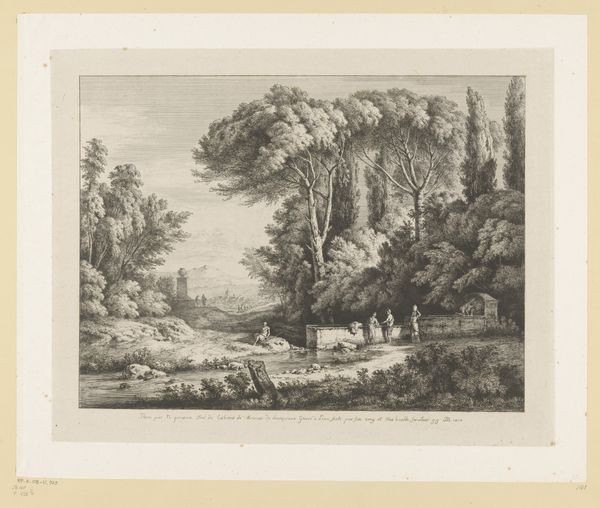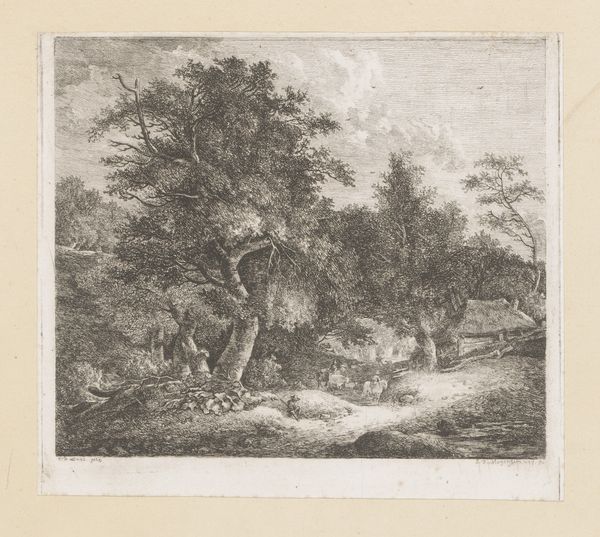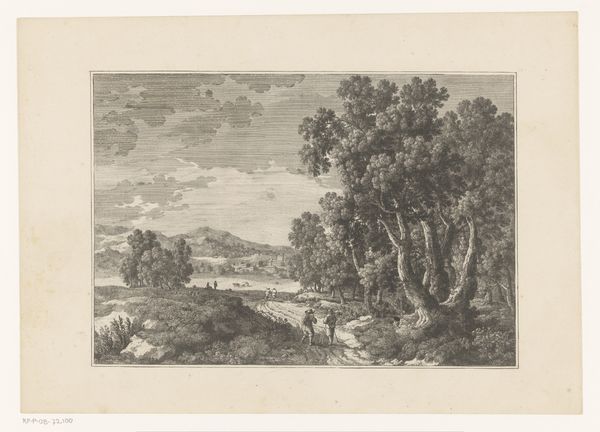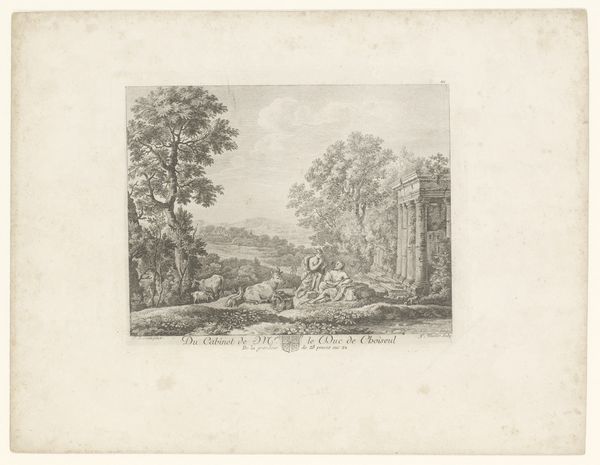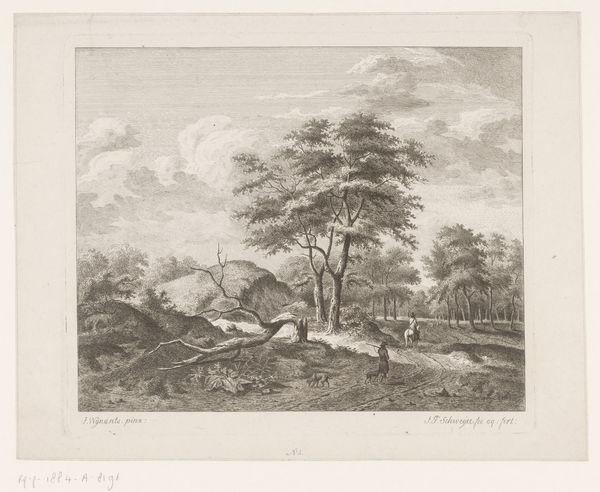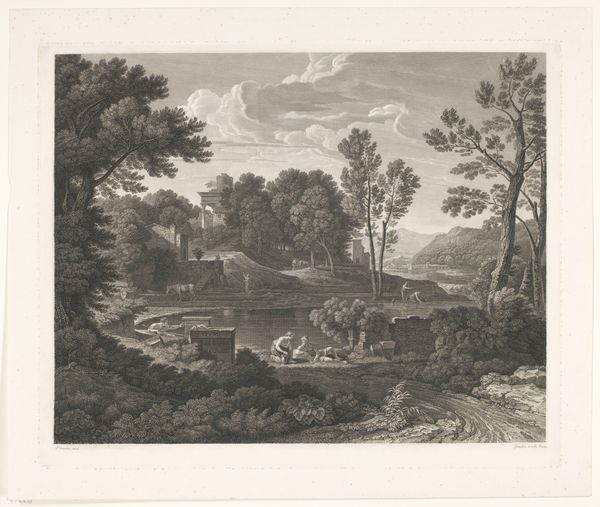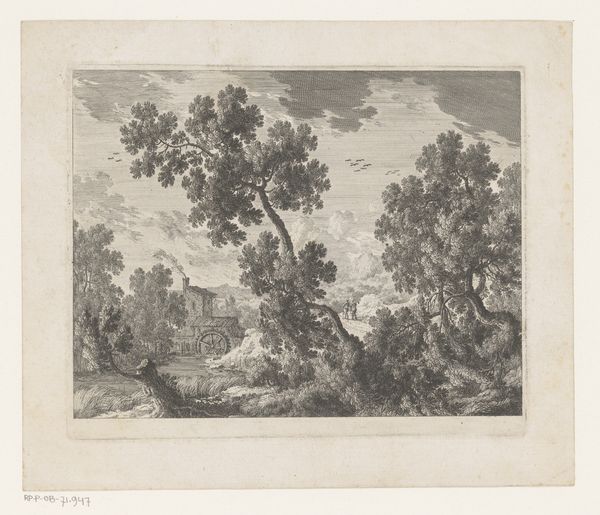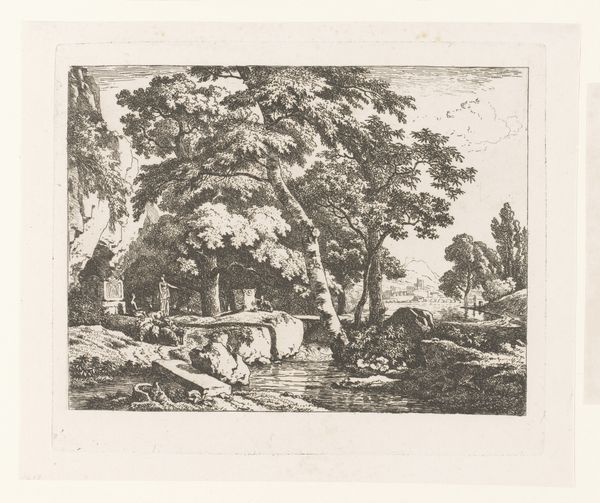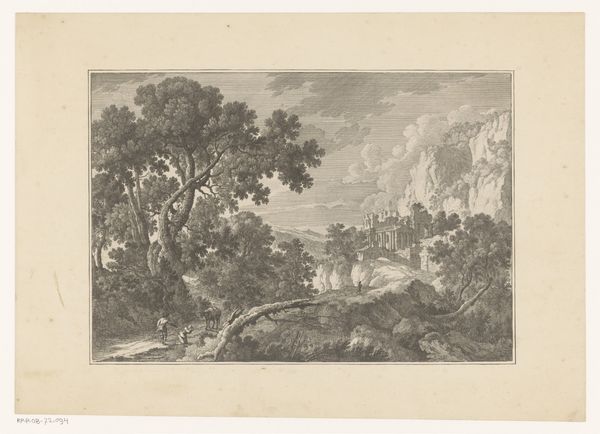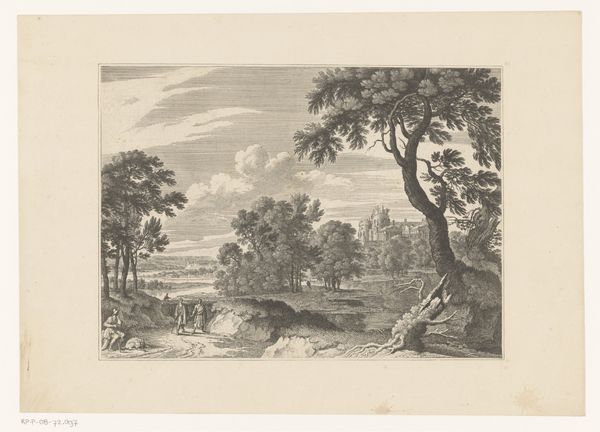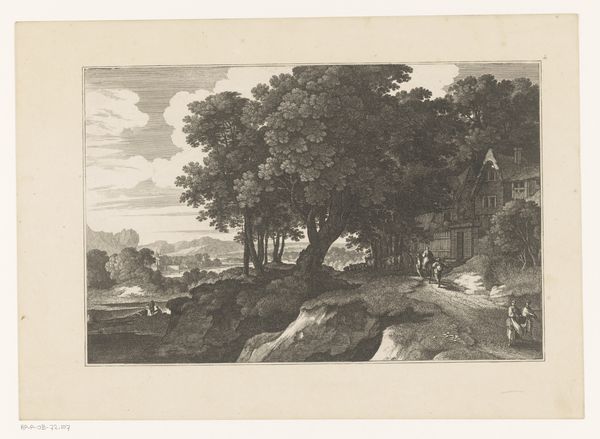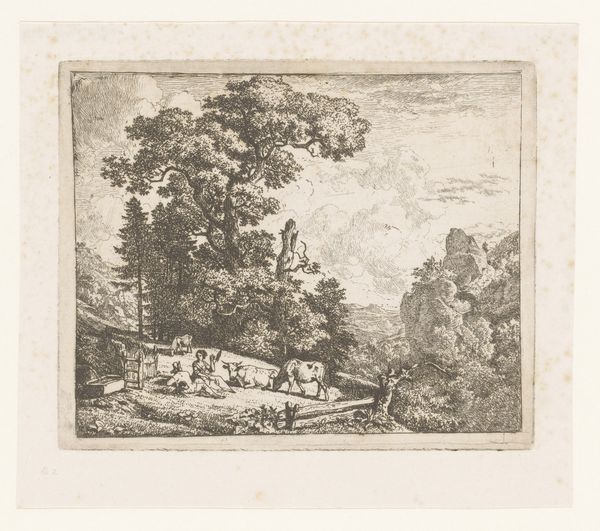
drawing, paper, engraving
#
drawing
#
landscape
#
paper
#
romanticism
#
engraving
Dimensions: height 322 mm, width 408 mm
Copyright: Rijks Museum: Open Domain
Curator: Oh, this engraving just breathes serenity. The softness! Editor: We're looking at Jean Jacques de Boissieu's "Resting Shepherd with a Herd of Goats in a Landscape" from 1804. It’s an engraving on paper, placing us squarely in the Romantic era. I can feel a strong undercurrent that highlights the impact of agricultural labor on people's access to land. Curator: Precisely! See how the single, leaning tree in the foreground kind of anchors the whole composition? There’s a solitude there, but also a sense of belonging. Editor: It's pastoral, certainly. The landscape is dotted with architectural ruins, signifiers of empires gone by, and juxtaposed to a working-class contemporary rural setting, so we must remember how notions of idyllic rural life often romanticized—or actively concealed—the realities of rural poverty. Curator: I see it as this harmonious balance though. A blending of human life within the landscape—unpretentious. Almost like finding peace with the passing of time. Editor: The architectural ruins absolutely speaks of time's passage. There is, however, also the issue of artistic license. De Boissieu may well have selected which parts of the scenery he would amplify or omit. The politics of landscape art are quite tricky to dismiss. It invites a needed examination of power structures and their impact on representations of land and labor. Curator: Even still, aren’t the light and shadows dreamy? And that shepherd—doesn’t he seem content in his smallness, within all that expanse? The tiny flock against a big vista somehow comforts me. Editor: Yes, de Boissieu's attention to light is very delicate. This type of visual harmony also acts as propaganda. I always urge viewers to question whose interests the artwork actually represents. Curator: Alright, that's certainly something to think about while contemplating this scene. It certainly has given me pause. Editor: Exactly. By connecting its historical setting with modern, intersectional critiques, one discovers a more profound understanding of what Romanticism conceals and what is so moving about this style.
Comments
No comments
Be the first to comment and join the conversation on the ultimate creative platform.
